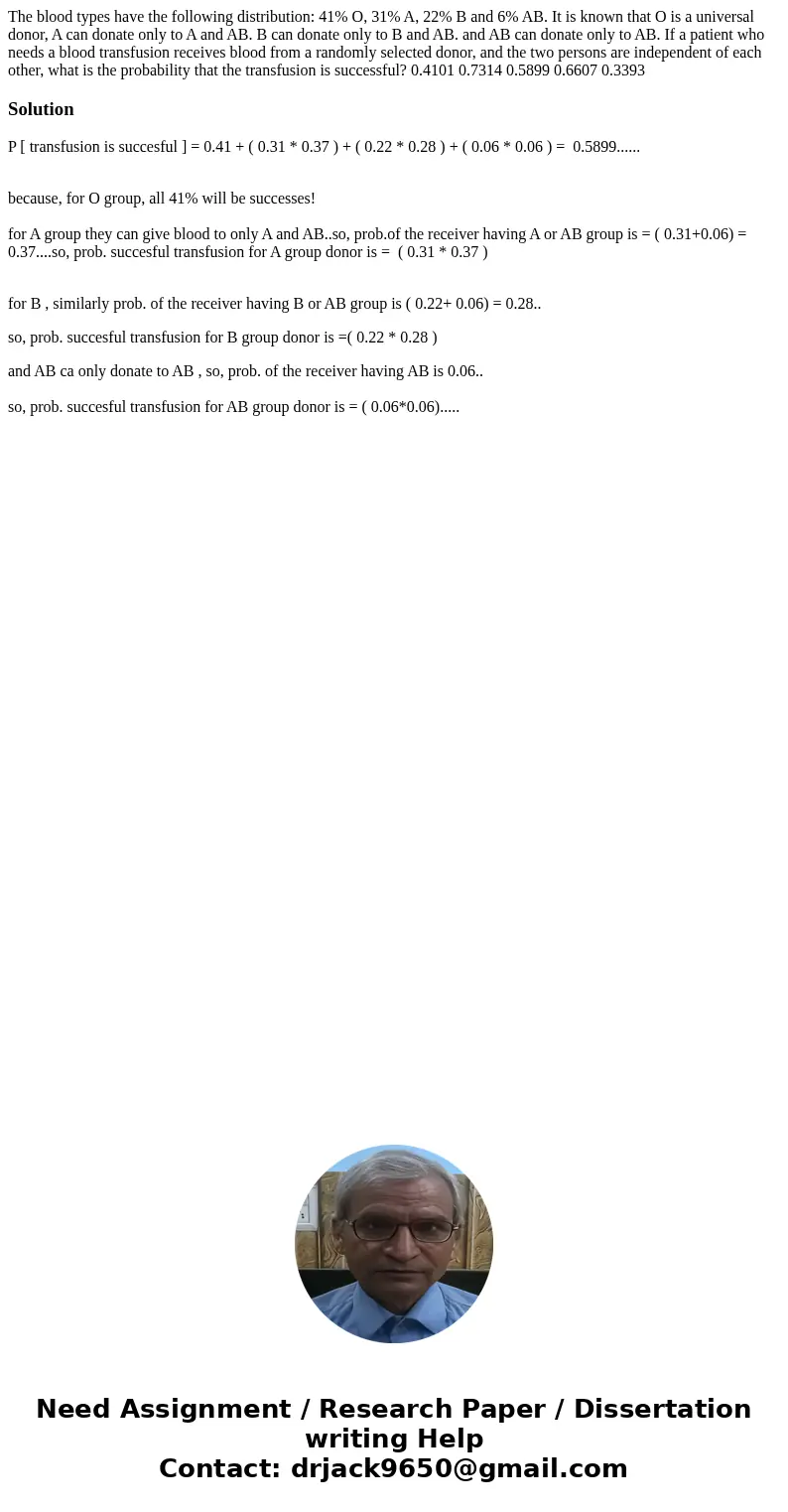The blood types have the following distribution 41 O 31 A 22
The blood types have the following distribution: 41% O, 31% A, 22% B and 6% AB. It is known that O is a universal donor, A can donate only to A and AB. B can donate only to B and AB. and AB can donate only to AB. If a patient who needs a blood transfusion receives blood from a randomly selected donor, and the two persons are independent of each other, what is the probability that the transfusion is successful? 0.4101 0.7314 0.5899 0.6607 0.3393 
Solution
P [ transfusion is succesful ] = 0.41 + ( 0.31 * 0.37 ) + ( 0.22 * 0.28 ) + ( 0.06 * 0.06 ) = 0.5899......
because, for O group, all 41% will be successes!
for A group they can give blood to only A and AB..so, prob.of the receiver having A or AB group is = ( 0.31+0.06) = 0.37....so, prob. succesful transfusion for A group donor is = ( 0.31 * 0.37 )
for B , similarly prob. of the receiver having B or AB group is ( 0.22+ 0.06) = 0.28..
so, prob. succesful transfusion for B group donor is =( 0.22 * 0.28 )
and AB ca only donate to AB , so, prob. of the receiver having AB is 0.06..
so, prob. succesful transfusion for AB group donor is = ( 0.06*0.06).....

 Homework Sourse
Homework Sourse